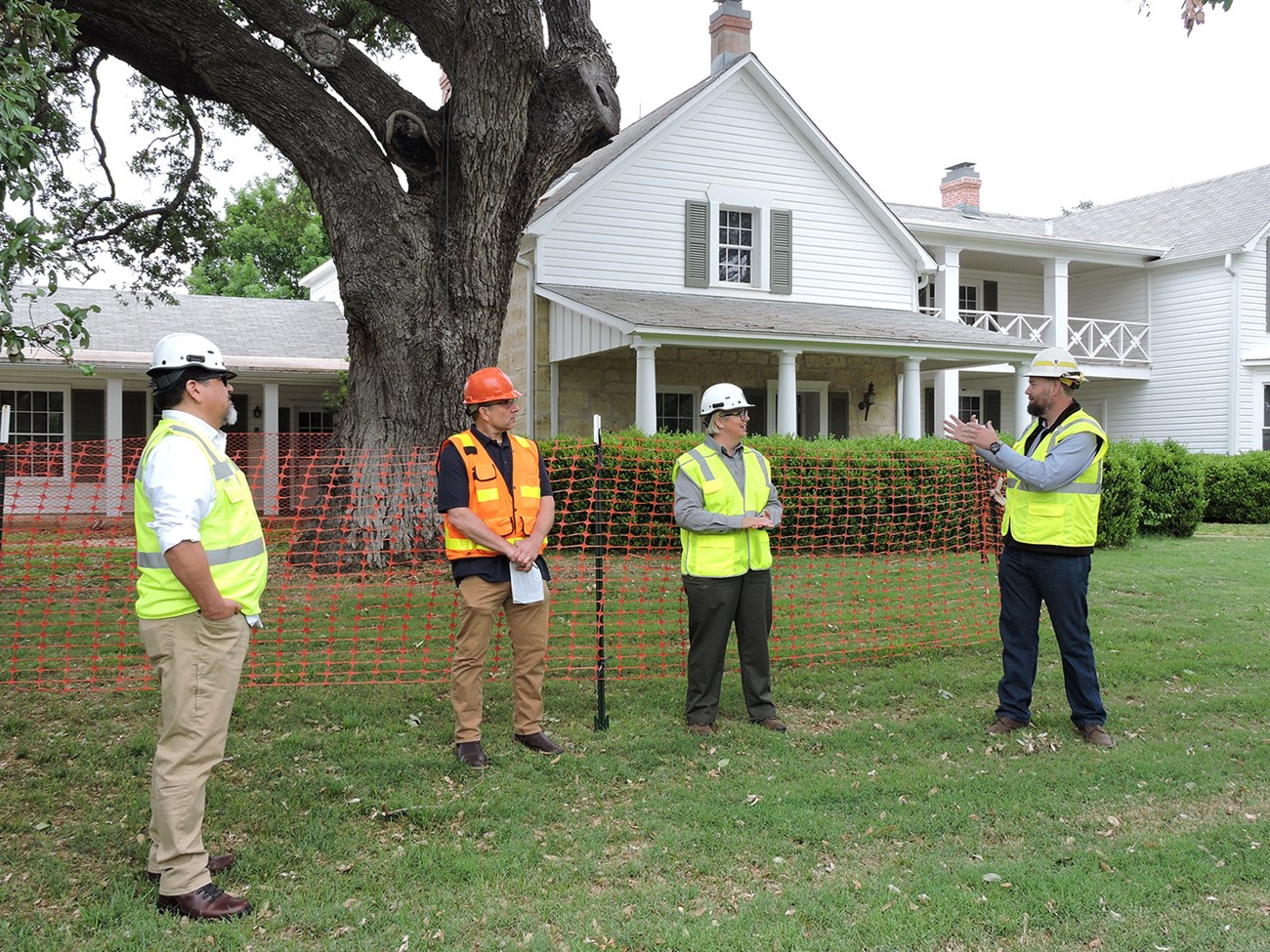Last updated: January 25, 2025
Article
April 23, 2024: NPS Director Visits Texas White House Rehabilitation Project

NPS Photo/Cynthia Dorminey
The extensive renovations underway at the Texas White House were the focus of a recent visit to Lyndon B. Johnson National Historical Park by National Park Service Director Chuck Sams. Sams was briefed on the progress of the rehabilitation project and the positive impacts it will have on the preservation of the historic buildings and the ability to share the story of President Johnson, his family, and their accomplishments with the public.
Closed to the public in 2018 due to structural and mold issues, the Texas White House is now in the midst of a multi-year rehabilitation project, funded by the Great American Outdoors Act (GAOA) Legacy Restoration Fund and other sources. Since the construction phase of the project began on January 2, the project contractor has completed the careful removal of obsolete heating and cooling systems from both the Texas White House and Airplane Hangar in preparation for the installation of state-of-the-art systems.
The park’s museum staff is also hard at work with the ongoing conservation of more than 10,000 historical artifacts that were removed from the house for safekeeping during the project. Upcoming work in the Texas White House Complex will include stabilization of the historic communications trailers and switchboard building as well as the rehabilitation of the historic Hangar, which serves as the LBJ Ranch Visitor Center.
The Texas White House Complex is anticipated to reopen to the public in late 2025, after construction is completed and the buildings can be restaged. Design of an updated interpretive experience and new exhibits for the Hangar is also ongoing and will be incorporated in the future as well.
GAOA is part of a concerted effort to address the large maintenance and repair backlog in national parks. Supported by revenue from energy development, it provides up to $1.3 billion per year for five years to make significant enhancements in national parks to ensure their preservation and provide opportunities for recreation, education, and enjoyment for current and future visitors.
